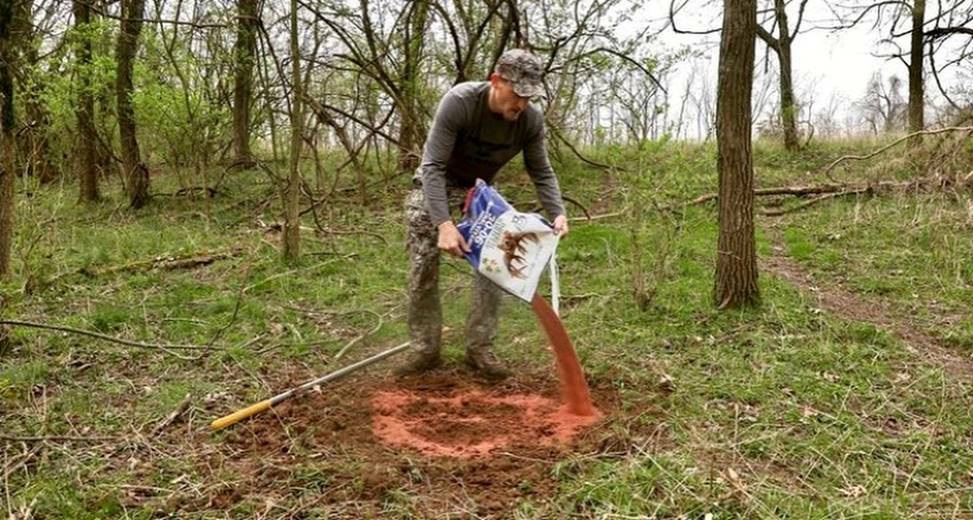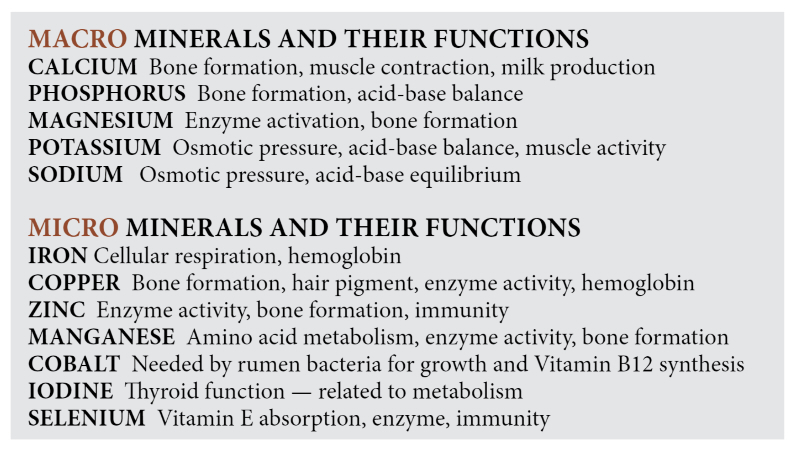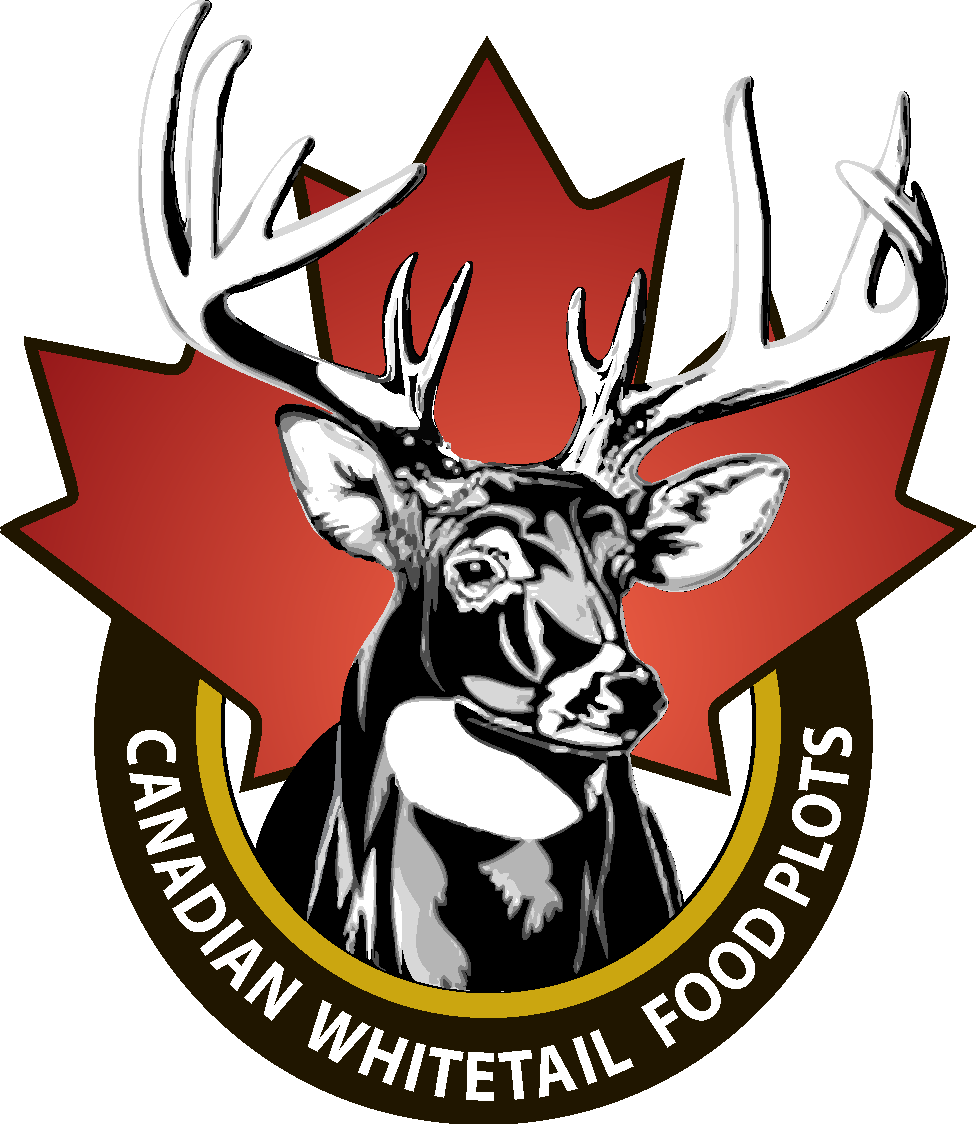Building A Strong Foundation: The Importance of Mineral Nutrition
by Matt Harper
The topic doesn’t receive a lot of press, but quality mineral supplementation can help boost your deer herd.

I don’t like phrases used so often in writing and speech that they become cliché, like a bumper sticker slogan.
You might ask why I titled this article in the manner I claim to dislike. In some cases, the phrase “building a strong foundation” holds so much truth and is so universally relevant that there’s no better way to say it. The importance of a solid, steadfast foundation can be seen in almost every aspect of life, not just the construction of a building. A championship team must have a strong foundation in fundamentals, a marriage must have a solid foundation of love, and a business must have a bedrock foundation in the marketability of its product. The principle of a strong foundation is even found in the Bible, Matthew 7:24-27. (I suggest reading the whole chapter.).
In white-tailed deer management, fundamental aspects must be present to build the foundation for a strong deer herd. For example, good habitat is a core element of any successful management plan, as are harvest strategies, age structure, buck-to-doe ratios and the like. Of course, nutritional management is a foundational must, as it’s vitally important to a strong, productive herd. Like all the aforementioned components to construct a quality deer management program, you can double-click into nutrition to get more granular in specific aspects of needs.
In general, basic nutritional requirement include protein, energy, minerals and vitamins. In most cases, that’s where the conversation stops. Of those four, protein is mentioned most often and touted as the critical component on which to focus. Protein is important and is often lacking in natural diets, at least at a level for deer to realize maximum genetic potential. But it’s a component, not the whole, and cannot alone achieve overall nutritional objectives.
Minerals typically take the silver medal in discussions of whitetail nutrition, and like protein, they’re often lacking in availability for optimum results. In either case, the conversation is broad and typically only includes the comment, “Deer need protein and mineral.”
You can dissect protein to identify more specific nutritional needs and management practices. But in this article, we’ll peel away the layers of mineral nutrition to understand the why, what and how of using a mineral supplement to build a solid nutritional foundation.
The Case for Supplementation
White-tailed deer have existed for thousands of years without the aid of manmade supplements. Deer inhabit and in some cases thrive on properties with no mineral supplementation. So, some folks argue that mineral supplementation is not needed and has no benefit. That thought process is correct in a limited way, depending on how you define needed. If that simply refers to the ability of a species to survive, it’s accurate. However, if it refers to a deer herd’s ability to reach maximum genetic potential, some holes in the logic begin to show. Arguing that mineral supplementation is of no benefit is even harder to justify based on what we know about the importance of mineral nutrition and mineral availability in a deer’s natural diet.
Mineral is defined as a solid inorganic substance that occurs naturally, with a defined chemical composition and a specific crystal structure. Minerals are found in soil, rocks and plants but are derived from the rock ore of the soil. If an area is high in limestone deposits, it’s likely the soil contains high levels of calcium. Soils vary greatly in specific mineral content based on many geological and environmental factors. The actual mineral content varies in total mineral levels and specific mineral levels, meaning that some soils might be high in calcium but low in selenium. Even in highly productive agricultural regions, soils can lack mineral content. Further, plants use minerals in the soil, depleting the dirt of minerals through time. That’s why farmers fertilize crop fields each year to put back what has been removed. So although some areas might naturally be higher in mineral than others, all properties lack the appropriate level of all minerals, which prompts the need for supplementing soil with fertilizer to improve plant growth.
The same holds true for supplementation of the critters that consume plants that grow in that soil. Iowa is known for highly productive crop ground and good, rich dirt. Even in southern Iowa, where the hills and trees from Missouri start to encroach (both being US states renowned as being Giant buck producers), the land is still very productive, especially for cattle. Pasture growth is abundant, and when managed well, can support some of the highest grazing concentrations in the country. You might think that mineral supplementation for cattle in that area would be a waste, but that’s not true. Cattle supplemented with mineral in that area will have higher body weights, a higher breeding percentage, faster calf growth and overall better health and productivity. That area might be better than others in terms of mineral levels, but there are still insufficient natural levels to achieve full productive potential. Reams of research prove this in cattle, and although the amount of research on deer pales in comparison, the biological logic does not change, and the physiological and metabolic functions are the same. That’s why deer managers have seen improvements of the aforementioned data points when using a mineral supplement.
The Function of Minerals
One of the book shelves in my office has at least six textbooks that in part or entirely discuss the many and varied vital functions of minerals. I don’t have the space here to discuss the function of every mineral in a deer’s physiological system, and doubt you want to read that anyway. But I think it’s important to have a general understanding of some of the main functions of minerals often found in deer mineral supplements to support what minerals can do in a deer herd. This will read a bit like a laundry list, but within the charts, you will recognize important mineral functions. Minerals are divided into macro minerals and micro minerals. Macro minerals are needed in large quantity, and micro minerals are needed in smaller quantities but are nonetheless vital for optimal nutrition.

Those are just a few mineral functions, but you can quickly see why proper mineral nutrition is so critical to optimal growth and production of whitetails.
Building the Foundation of the Entire Herd
When you look at the chart, your mind will likely go straight to antler growth, as so many minerals play a role in bone growth and formation. That’s true, but before we go down that road, let’s start at the beginning.
That big, gnarly 10-pointer hanging in a place of honor at your house started life as a tiny bundle of legs and slime lying in some inconspicuous weed patch being licked dry by its mother. At that point, he was 100 percent reliant on the doe and the quality of nutrition to which that doe had access. Even before he was born, he relied on what the doe had available to eat. Out in the world, he was on a life-and-death clock, with the balance depending on his mother’s abilities, milk supply and luck. The highest percentage of fawn loss occurs within the first few hours to days after birth. The physical well-being of the doe can affect her maternal drive, meaning that if she’s in poor condition, she can be more likely to abandon the fawn. More important, the quantity of her milk supply has the greatest effect on the survivability of the fawn. A doe’s milk is very nutrient - dense, as the young fawn needs high levels of protein, energy and minerals for rapid growth. If a doe is in poor condition, the quantity of her milk will decrease, so fewer nutrients are supplied to the fawn.
Contrary to what many people think, the mineral that goes toward milk production does not come directly from diet but rather from the skeletal structure of the doe — the bones. Minerals such as calcium are pulled from the doe’s bone structure and end up in the milk. If a doe does not have a solid skeletal foundation, less mineral transport will occur, and less milk is produced. The greatest factor contributing to the availability of mineral for milk production is the mineral content of the diet. If a doe has sufficient mineral in her diet to supply the skeletal structure, more mineral can be used for milk production. That’s the same process that happens with dairy and beef cows, which are fed high levels of mineral during peak or early lactation to ensure that production stays high. A doe does not produce as much milk, but the nutrient concentration of her milk is much denser, meaning her mineral requirements per pound of intake can be even higher. Beyond early survival, a fawn’s growth rate for the first few months of life depends on the mother’s milk. If she does not maintain a solid mineral nutrition foundation, the fawn’s weaning weight, yearling weight and odds of first-winter survivability will decrease.
Fawns are one of the most overlooked groups in a deer herd. After they’re weaned, they begin growing skeletal structure, muscle and skin, which require minerals. Research shows that if they are stunted during their first year of life, they do not have a great ability for compensatory gain and can remain stunted for the skeleton for roughly three or four years before it’s fully mature, meaning that until that time, it needs mineral for skeletal growth as well as antler growth. But it’s not just direct bone growth. As the chart indicated, many micro minerals play a role in enzymes and metabolism, which affect the overall digestion and usage of the diet and, therefore, the ability of a buck to reach full potential.
The Antlers
Antlers are bones outside the body — essentially an extension of the skeletal system — that regrow each year. Sometime in early spring, antler buds start to appear at the pedicles and have the basic consistency of a newly born bone. At that time, and for the first few weeks of new growth, antlers are comprised of a protein matrix that makes up the framework and a skin / velvet layer that contains the blood source, which is the pipeline of protein and minerals that build the antler. Through time, mineral deposits form on the protein matrix to provide the solid, hard makeup to withstand the fighting brutality of the upcoming rut. As summer progresses, the rate of mineral deposition increases as the protein matrix nears the end of the structural build. As fall nears, antlers become more mineralized, and eventually, the velvet slips away to reveal a hardened antler that is slightly more than 50 percent mineral. As mentioned, bucks don’t reach skeletal maturity until they’re 3 to 4 yrs of age, so until that point, the body uses mineral for skeletal growth and antler development. That’s why the full potential of antler size cannot be realized until the buck reaches full body maturity.
Just as mineral from the skeletal system is used in doe lactation, mineral for antler growth is also pulled from a buck’s bone structure. Even at maturity, if a buck doesn’t have enough mineral in its diet to compensate for maximum transport to the antlers, he will transfer less mineral. The buck will naturally not risk the health of its body for antler growth, as antlers are secondary to body health. Therefore, high-quality mineral is needed in the diet to build a solid mineral foundation in a buck’s skeleton to ensure that optimal mineral can be used for antler hardening. Good mineral nutrition in bucks results in larger antlers, but more notably, greater antler density, strength and mass. That has been seen and studied in many cases in which bucks are not given mineral supplement. They showed far more antler breakage during rut than bucks that had optimal mineral nutrition. Finally, even at maturity, bucks tend to have heavier body weights when on a mineral supplement versus deer with poorer quality mineral nutrition.
Conclusion
A good foundation becomes the bedrock on which a strong building can be produced. Good nutrition, including mineral nutrition, is one of the components needed to assure a solid foundation. A house can be built on a weak base and might remain upright for a time, but when adverse conditions arise, the poor foundation immediately becomes evident. Many elements can go into a good whitetail management structure, but don’t forget to start with a foundation that can help produce results year after year.
